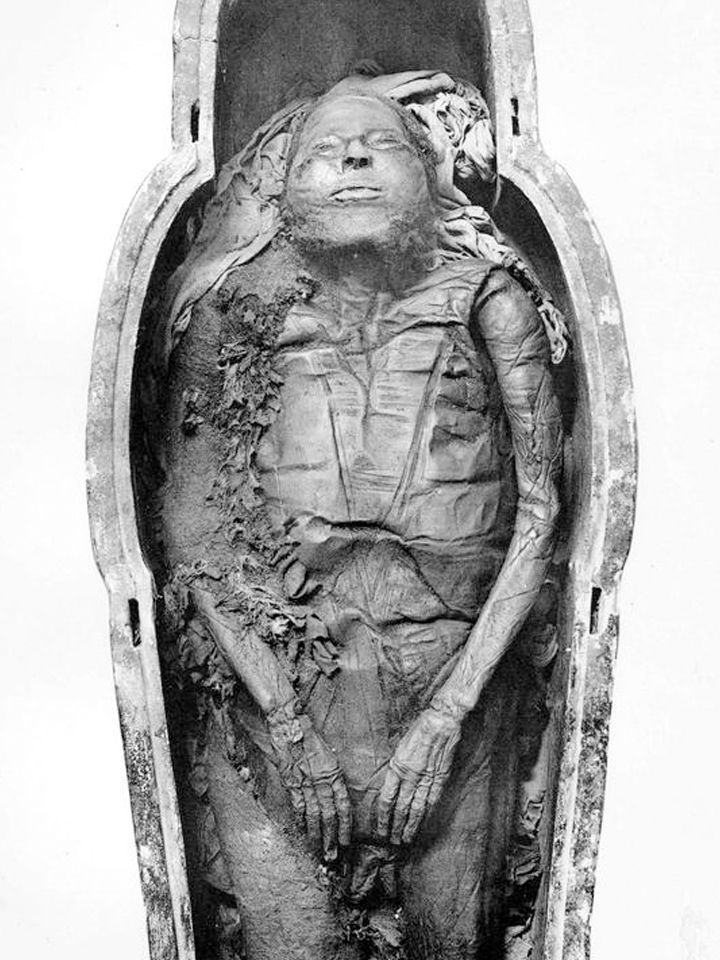Third Intermediate Period Mummification

During the Third Intermediate Period, methods of mummification saw a huge shift. For a brief period, no longer were organs placed in canopic jars – instead, they were removed, wrapped, and replaced in the body. Despite this, canopic jars, now sometimes made of wood, could still appear in tombs, even if they were empty. By the 25th Dynasty, however, the jars were once again in use, placed either near the mummy, in between its legs.
Similarly to the New Kingdom style, the bodies were then filled with sawdust and resin, and the eyes were replaced with glass or stone. Skin would be repaired and painted, red for men, yellow for women. In some cases, embalmers would apply false eyelashes made of human hair. Nails were preserved, and amulets were placed over the torso.
Later in this period, mummies were wrapped in a cartonnage, a full-body cast made of plastered linen, similar to papier-mâché. These cases would be decorated with spells and other artwork, then covered in shrouds and a beaded net.

At-A-Glance
- For a time, organs were removed, wrapped, and replaced in the body.
- The bodies of men were painted red, and women were painted yellow.
- Later, mummies would be covered in a full-body cast, made of cartonnage.


